The past can be so many countries. Excerpts from conversations, snatches of memories—about home and the world
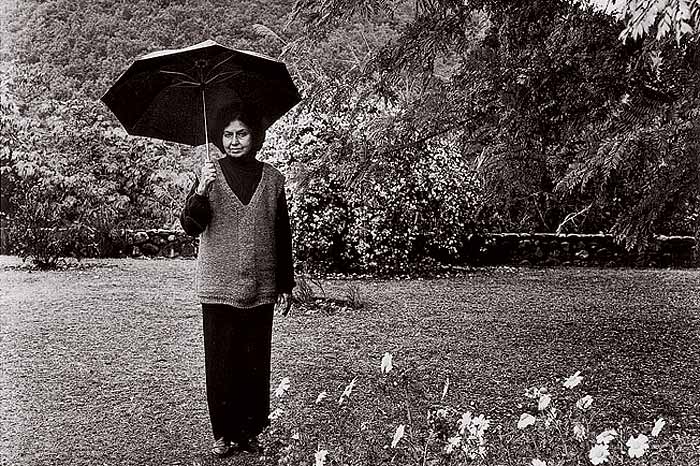 Nayantara Sahgal seen from the veranda of her home in Dehradun/ photograph by MADHU KAPARATH
Nayantara Sahgal seen from the veranda of her home in Dehradun/ photograph by MADHU KAPARATH
Nayantara Sahgal on Dehradun [February 2002]
Rajpur Road [in Dehradun] is the town’s main vertical artery. The houses on my mother’s tree-lined stretch were few and far apart. Her own had no neighbour on either side or opposite. It was bordered on the north by the Himalayas ranging southeast to Tehri Garhwal, and on the west by thickly wooded mountainside untouched by the rapacious limestone quarrying that had denuded tracts of northern hillside to bald shiny rock. The western hill descended to a dry boulder-strewn riverbed that became the riotous Bindal river during the monsoon. Monkeys came and went, making it impossible to grow a kitchen garden, but with forest still left to inhabit they had not become as aggressive as they later became. Wild pheasant strutted along the low stone boundary, safe from gunshot. Once a deer came calling. One night a leopard left a storm of chicken feathers on the lawn. Mussoorie lights twinkled from the northern hill at twilight. Nights were starry, the silence abiding, broken eventually by a pre-dawn lorry thundering by with stones from the Rispana’s riverbed. The river’s water had been diverted to the Eastern Canal, where it is carried tumbling and frothing for the town’s home and garden needs, and at one time for the tea estates that had flourished here.
I inherited my mother’s house in 1990 and, in recent years, new houses have risen along my road, some with high stone walls topped by broken glass where once there were only hedges. Garbage gets dumped on the roadside or down the khud. A kind of reflex action, like spitting, needing drastic remedy. But in this urban disorder that is north India, dedicated gardeners put luscious litchis, peaches and strawberries on the market. Mushrooms have long been an industry and flower stalls are everywhere, starring glowing gladioli. Since the Supreme Court forbade quarrying, the northern hill is re-foresting.
What makes for a sense of home or country? Two things, here. One is the Rajpur bazaar and the road rising steeply from it, where a conglomeration of Hindu, Muslim, Christian and Tibetan Buddhist families have long lived. Tailors, carpenters, barbers, halwais, shopkeepers all know each other and the bank and post office know them all. No melting pot, this. Nor is India. Vive la difference—give or take a few fanatics—is in the blood. So is the oldest wisdom, that there is no single wisdom.
The other assurance that this is home comes from a landscape—albeit my private acre of it—at peace with itself.
Shyam Benegal on the Indian Railways [July 2005]
My feelings about the railways have a great deal of ambivalence because when I was young, I was compelled by circumstances to travel in unreserved third class. This was never the most comfortable way to travel—it was always crowded, steaming bodies, people smoking beedis, I didn’t quite fancy it. I belonged to a lower middle class family in Hyderabad and we used to visit relatives in Bangalore, Mangalore and Bombay. I never used to look forward to train trips. I didn’t get this feeling many people have for the Indian Railways—of travel to places unknown, serendipity, the sense of anticipation, of the unexpected, one which you hope will be exciting and wonderful.
But as I grew up, my sense of travel by the railways began to grow pleasant for many reasons. Travelling made more sense, partly because we could afford a better class but also because one could by then communicate with strangers. By the time I was in my mid- to late teens, all journeys became a sense of discovery, of places, people and regions. It’s in my temperament; I enjoy travelling.
There is something about the Indian Railways which fascinates me endlessly. First, if you don’t know the railways, you don’t know India. It is really the skeletal structure of the country. It sets out the geography; it gives you an incredible experience of the vast diversity of the people and the country. Second, it has an incredible place in the history of modern India. It allowed national leaders like Mahatma Gandhi to go everywhere in the country. Without it, the Independence movement would not have developed as it did. Visualising the ‘nation’ became easier because of the railways.
As told to Aparna Narayanan
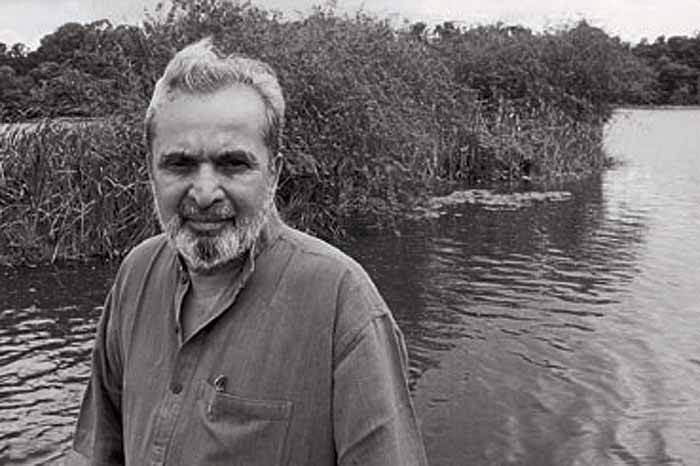 U.R. Ananthamurthy/ photograph by S. SATISH KUMAR
U.R. Ananthamurthy/ photograph by S. SATISH KUMAR
U.R. Ananthamurthy on Malnad [July 2002]
Swadesho bhuvana thrayam—your own place is all of the three worlds. I had everything I needed to grow up right there in my little village, Melige… It was the unseen presence in our lives, its roar reverberating within the walls of our village home. The cows tethered in the adjacent shed seemed to know that a tiger was in the vicinity much before we did. The little bells slung around their necks would begin to tremble. It was a peculiar sound that was the signal to shut all doors and windows. We would huddle around my mother in a corner, as my grandfather recited slokas in the hope that the vedic chants would keep the tiger away. It was the 1930s and growing up in Melige, a remote hamlet in Karnataka’s picturesque Malnad region, meant adventure and discovery in equal doses. The forest enveloped our home and the arable lands around. It was the dominant influence on our everyday life. Each morning my grandfather, sickle in hand, would chop away at the undergrowth to keep our clearing free from the relentless march of the forest.
My father was a ‘shanbaug’, a tax collector who also doubled up as the legal counsellor for the villagers. Once a year the British collector, in a top hat, would visit the village, reminding us of the omniscience of the Empire. But copies of Gandhiji’s Harijan had already made inroads and fierce nationalism was a badge we all wore on our sleeve. Ten kilometres away was Thirthahalli, the taluka town with a school where I studied. The same one that one of my literary icons, Kuvempu, attended. This ten-kilometre radius constituted my entire universe for sixteen years and gave me a glimpse of the world that grew within me.
As told to Archana Rai
Bill Aitken on Biking in the Deccan [April 2002]
When I return home to the hills of Mussoorie, the precise moment of satisfaction arises
at a given altitude where a fresh species of tree appears with its emerald leaves aflutter. Travellers, like gamblers, like a little flutter, and to me the perfect travelling companion is a light breeze.
You don’t need high hills to provide this quickening of the breath. Approached from the coast anywhere between Surat and Kanyakumari, even the rise of the Western Ghats is impressive. South of Maharashtra, the delight of undulating roads climbing through dappled forest and past dramatic waterfalls is capped by emergence on the Deccan plateau with its perpetual riffle of welcoming breeze.
The monumental rockscape before you, of bouldered grandeur, along with the architectural input of proud but passing dynasties, have been eroded by this winnowing wind to remind the passerby that up here, on peninsular granite 3,000 million years old, Nature calls the shots while the plateau breeze calibrates her sights.
On top of the Deccan’s muscular display of architecture is the bonus of rural devotion and its avant-garde theology that audaciously recognises love in the heart as the sure sign of divinity. Grace has been defined as the flowing hair of a child riding a bicycle, and to experience the rare bounty of the Deccan’s slipstream a motorbike is recommended.
To many, this must sound like leaving comfort sorely behind, but since you are master of your destiny each rider is responsible for shaping his end. Instead of viewing a two-wheeler as a travail the visitor can use it as an opportunity to test the beingness (or otherwise) of Providence. Having hitchhiked overland to India forty years ago and covered a fair whack of subcontinental roads since then, Providence is now like a guardian angel riding pillion. You ignore her nudges at your peril. If her gentle whispering breezes fail to alert you she sends a stiff warning.
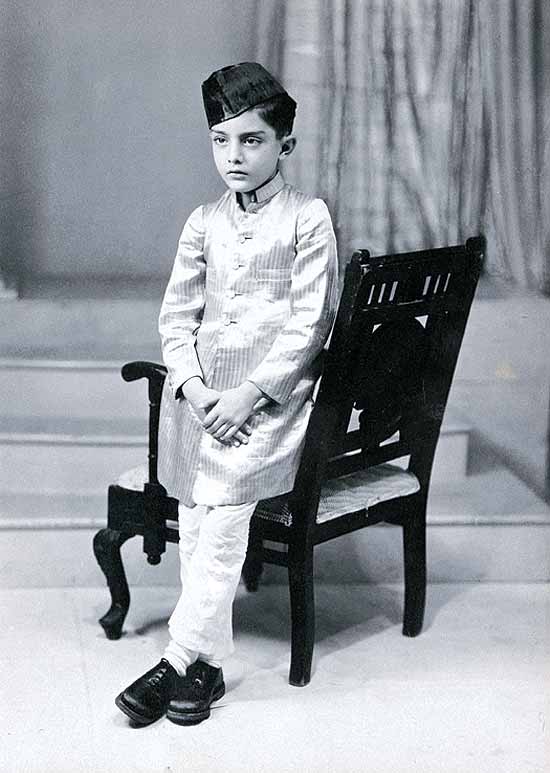 COURTESY: M.A.K. PATAUDI
COURTESY: M.A.K. PATAUDI
Mansoor Ali Khan Pataudi on Pataudi [December 2002]
I’ve travelled to every continent, and I’ve spent most of my years in four places—Bhopal, from where my mother hailed; Pataudi, the family seat; the UK, where I studied and Delhi, where I now live. But if there’s one place I can think of as home, it’s Pataudi.
My three sisters and I were taught at home, in the palace, for the first few years. After Independence, my father got a job in the External Affairs Ministry, and we moved to Delhi. I was sent to Welham, in Dehradun, where I spent three years. On January 5, 1952, my eleventh birthday, my father died of a heart attack while playing polo in Delhi; he was forty-two.
That same year, I sailed to the UK. At prep school and, later, at Winchester, I acquired some distinction as a sportsman. I played my first first-class match for Sussex in 1957, as a sixteen-year-old. In 1959, I enrolled at Oxford, and continued to play county cricket—with rather more distinction than I brought to bear with my academic pursuits. By 1961, I was heading the batting averages in England. But the motorcar accident in 1961, in which I lost my right eye, changed all that…
Towards the end of 1968, after what I consider my best cricketing year, Sharmila [Tagore] and I were married. My family’s cultural and literary background isn’t, of course, quite as awesome as the Tagores’—we don’t, for instance, have a Nobel Prize winner in our family.
We are basically Afghans with a bit of Turkish blood who came down a few hundred years or so ago as glorified mercenaries, rushed around on our horses and occupied space for ourselves. Over the years, we’ve become a little more sophisticated.
…I don’t quite fancy travelling extensively any more. I do go to Europe on occasion—and whenever I’m in England I drop by at Lord’s to meet old friends and catch up on…no, not cricket, but our personal lives. But wherever one may go, Pataudi, the state that’s no longer ours, draws me repeatedly. I’m here fairly regularly: you can find me here wandering around with a book. It isn’t just the place, it’s also the relationships that it has nourished for generations now. I guess that’s why it’s ‘home’, and will always be.
As told to V. Venkatesan
Ravi Shankar on Banaras [May 2003]
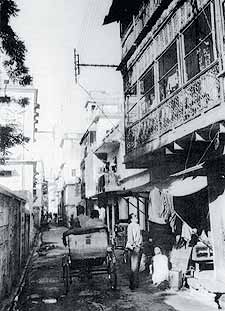 |
| COURTESY: RAVI SHANKAR FOUNDATION |
I remember Banaras more vividly than any place else. I suppose because it was here that the first awakening of my senses began. The atmosphere was so pure and so strong—nowhere else have I felt that strong spiritual vibration, except, maybe, for a little while when I visited Jerusalem. Banaras was in its full glory then; it was not attacked by tourism, drug use, filth, dirt and so many strange things of today. The ghat gave me the greatest entertainment—theatre, acting, music, temples and palaces the maharajas had built. In those days, each palace had its own shehnai player. I did not like the burning ghats, though, which seems to be the greatest attraction for the tourist.
I loved Banaras so much that, in 1972, I went back and bought a bagicha near Shivpur. It was a huge property, and there I thought I will make my home, and called it ‘Himangana’ named after my mother Himangini. In 1974, George Harrison came with his friend and spent three weeks. We had a grihpravesh and Vedic ceremony with South Indian priests chanting the Vedas. It was beautiful. I was sure I could start a gurukul system, an ashram.
But it was not to be, because Banaras had changed. The commercialisation, the over-population, the cacophony, the chaos. My Ganga almost felt like a sewer. And gunda-ism... I found people carrying guns and saying things like, “Arre kahe, usko khatam kardein?” We held music festivals, workshops, conferences, and we had problems with everyone—people saying things like “tees passes chahiye, nahin to electricity nahin chalega”, slashing tents with knives and getting in. The dream I had, the Banaras I had in my mind, I had lost it. So, very sadly, I left in 1980.
As told to Charu Soni
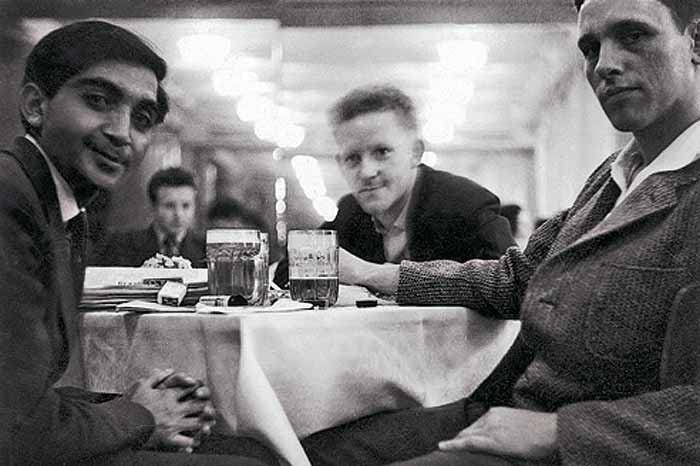 ERICH EINHORN
ERICH EINHORN
Nirmal Verma on Prague [January 2002]
In those days I was in a ‘transit’ room of a student hostel across the river, at a stone’s throw from the Prague Castle. My neighbours were three jovial-looking Burmese trainees who were always cooking something or the other. A familiar fragrance of their Oriental dishes floated across the dark corridor with a sad touch of homesickness. Yes, you can be sad and homesick even in Prague—as elsewhere. More so, when it is autumn and the leaves are falling.
It was early October. In the evening when I returned to my transit-corner, tired and cold, I gazed outside the window where I could see the tower of Strahov monastery rising high against the autumn sky. Near by was the Museum of National Literature, which I had visited a few days back. There was an exhibition depicting Kafka’s life in Prague, which was inaugurated by Max Brod. Kafka and Prague—in those days, the haunted dreams of one were strangely intermingled in my mind with the confused images of the other.
The garden behind the monastery lay desolate and the leaves fluttered in the wind. Prague seemed to be enveloped in a sort of eerie medieval silence as if there had been no wars, no German occupation, no revolution. That was my first impression of the city—and it has lasted. Prague is a city so neatly divided between a zone of silence and a zone of voices. There is no wall of time separating them; the past intersects the present at every street corner so unassumingly that one hardly notices the signposts of time given in the tourist guidebook.
In the afternoon when I had nothing to do—what can one really do in Prague in autumn?—I used to wander around the deserted orchards nestled against the Renaissance palace of Belvedere. The whispering lovers in shadowy corners, the mothers with prams, an old gent with a pipe drowsing on a bench—and then you take a turn and suddenly your heart misses a beat. The entire city stretches below your feet with its towers and cupolas and spires shimmering in the autumn sun. You hear nothing except the muffled groans of the tram wheels or the elusive, quivering echoes of the church bells. Prague has many faces, but it is this face which I cherish the most. It is the face of a city that has learned the mysterious art of growing old with poise and a touch of gothic resignation so characteristic of medieval Slav towns.
As told to Sheela Reddy
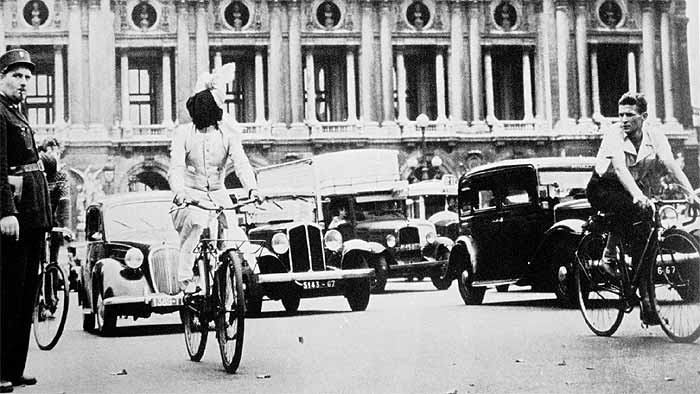 P.C. Sorcar Sr, blindfolded and on a cycle in Paris
P.C. Sorcar Sr, blindfolded and on a cycle in Paris
P.C. Sorcar Jr on the Illusion of Space [December 2003]
A stageperson’s life is much too varied, you can’t possibly compare it to any other’s. I often wake up unable to remember where I am—I look around for some indication, like ‘AMS’ on the tag of my travel case, for instance, and know that it must be Amsterdam.
There are times when, collapsing from exhaustion after a show, I rush to get home; it might only be a room at some hotel somewhere in the world, but that’s what I have to make home for the moment. Then again, when I’m sitting with my wife over a pot of tea, we often get a whiff of Darjeeling on a sharp high breeze, because it exists somewhere in our minds.
Often I don’t know who I am either. Sometimes I’m an illusionist, I belong to drama; at others I’m a rational scientist or an emotional believer; sometimes a lover, at others a sadist—somewhat like an endless maze of stories with inter-linked plots from the Arabian Nights. Every one so fascinating that at times I get jealous of myself.
In my youth, in Calcutta I had a pack of friends. One time we decided on an impulse to leave on a trip on the spot, taking nothing with us, no cash, and left notes at home saying we’d return in due time. After three days of travelling without tickets on assorted buses and trains, we ended up on the bank of a river in Junput, a few miles from Digha. We waved to a boatman squatting on the other side to ferry us over but he muttered a few curses and flatly refused. We were totally at a loss and sat mourning for over half an hour about this abortive turn in our bohemia. When suddenly a very old woman wobbled past us purposefully, suicidally we thought, into the water—and continued walking right across. It barely came up to her knee. That was an invaluable lesson—you never know the depth of a problem unless you wade right in.
As told to Paramita Brahmachari
Mark Tully on Calcutta [June 2003]
I was born in 1935 in Calcutta. There are several things I think when I think back about Calcutta. I remember the excitement of an ever-growing family. I was number two and by the time we left India in 1945 there were six of us. So there was always the excitement of a new baby in the house.
I remember the riverside very well. I was absolutely terrified of the puja processions, when they would take the goddess to be immersed in the Hooghly. Because there was all this noise, these very terrifying images of the goddess and, of course, the fact that we had been brought up to believe that one should not commit idolatry.
The Viceroy used to come to Calcutta every Christmas and he gave huge, great parties. The thing that sticks in my mind about that party is the Calcutta Fire Brigade demonstration where they would have these great big ladders which they would climb up and shoot water all over the place.
Tollygunge Club was just up the road and we would be taken to play and swim there by Nanny. We used to have tea on the lawn at Tolly Club with my parents. There used to be boys with red flags to keep the crows away. My mother would always tell me that my father proposed to her on the eighteenth hole of the Tollygunge Golf Club.
The other place we were very fond of was the Calcutta Swimming Club, on Strand. We used to have wonderful breakfasts there. There were huge great shops like Hall and Anderson, Army and Navy Stores and Whiteaway & Laidlaw’s. All in all it was a very European life.
We got back to England just before the War ended. It was a huge shock, moving from this rather luxurious home in Calcutta. My father stayed back in India for a few years. My mother had no servants, no help, no nothing. The weather was bleak and grim.
I realised the imprint of Calcutta on my mind the day I moved to Delhi in 1965, twenty years after we left. I was standing on the balcony of my room in Claridges Hotel. It was winter and there was a lovely smell of winter flowers plus the smell of maalis cooking their food on a dung fire. With the smell of the flowers and that smoke my whole childhood seemed to rush through my head.
As told to Amit Dixit
Birju Maharaj on Lucknow [October 2001]
I was born in Lucknow. Most infants born in the room in which I was born were girls. A neighbour, Kallu Bhaiyya, quipped that my being born in that room was comparable to Krishna among the gopis. One of the names of Krishna is Brij Mohan. Hence my name. Even today, I am surrounded by women all the time as I teach them dance.
My father Shri Achchan Maharaj was a famous exponent of the Lucknow gharana. The taleemkhana [in our house] had a phenomenal reputation. People used to say that if you pick up the dirt from the front of the house and put it on your forehead, you’d become a good artist. In 1946, my father began teaching at the Hindustani Music and Dance School in New Delhi’s Connaught Place. I began missing the feel of the mohalla, the locality. The warmth and camaraderie of the mohalla was such that if a child was hurt, the entire locality would get together. The street was ours, the shops were all our own, it was like one huge family. I learned to swim in the Gomti, and was very fond of flying kites. In our locality, there were no Muslim and Hindu sections—we all lived together and participated in each other’s joys and sorrows. Muslims would play Holi, and I remember that my father used to ask us not to tie ghungroo on our feet for fifteen days leading up to Moharram. What is called the Ganga-Jamuni culture originated in Lucknow.
Delhi was all about alienation. The music and dance school in Delhi was very different from the atmosphere of the taleemkhana in our house back in Lucknow. The words of encouragement—“What a gem. Do that again, son. You’ll make your father proud”—were sorely lacking. The mehfils were held either in large rooms or in courtyards. People used to sit on all sides. There was great proximity and appreciation for the slightest gesture or nuance. If you’d perform a certain step facing one side, people on the other side would request you to turn and perform it again. Monetary rewards would flow in.
…I cannot forget the old neighbourhood where all the houses had a platform on each side of the main door where tired travellers could rest. I wonder at the values that made people think about unknown travellers while designing their houses. I go there sometimes now. It is good to see the house, the streets and the mohalla where I grew up.
As told to Sopan Joshi
No comments:
Post a Comment